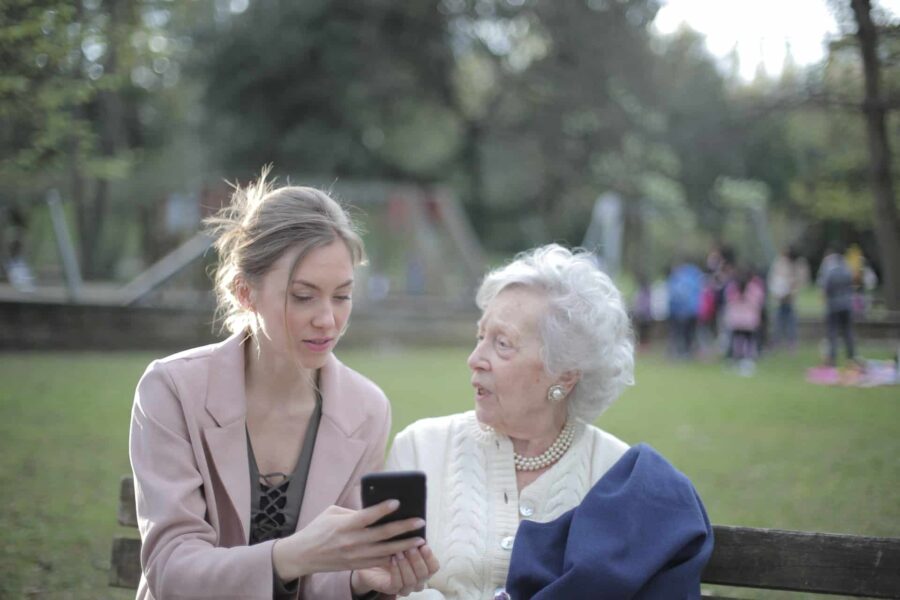Independent living vs assisted living – what’s the difference? Let’s dive in and explore these two popular senior housing options. You’ll be surprised at how they stack up!
I’ve lived in both types of communities, so I can give you the real scoop. Believe me, there’s more to it than meets the eye!
The Big Picture: A Tale of Two Communities
Picture this: A bustling community filled with active seniors vs. a cozy haven offering helping hands. That’s the key difference in a nutshell.
Independent living is like a vacation resort for older adults. You’ve got your own apartment or cottage, but with perks galore. No more mowing lawns or fixing leaky faucets!
Assisted living, on the other hand, is your go-to when you need a bit of extra help. It’s like having a personal assistant on call 24/7.
By the Numbers: Popularity and Costs
Here’s the kicker – about 1 million seniors live in assisted living, while over 2 million choose independent living. That’s a lot of happy campers!
Now, let’s talk money. Independent living won’t break the bank as much. You’re looking at around $2,000-$3,500 per month. Assisted living? That’ll set you back about $4,500 a month on average.
But here’s a little-known secret: Some assisted living places accept Medicaid. It’s like finding a golden ticket!
A Day in the Life: Independent vs Assisted
In independent living, I felt like I was at a never-ending party. Social butterflies will love it! There’s always something happening – from yoga classes to wine tastings.
Assisted living was a different ball game. I got help with tricky tasks like managing my meds. It was a real lifesaver!
Who’ll benefit most from reading this? Seniors weighing their options and their families. It’s a big decision, and knowledge is power!
Let’s dig deeper into the day-to-day differences. In independent living, I was the master of my schedule. I could sleep in, have breakfast at noon, or go for a midnight stroll if I felt like it.
Assisted living had more structure, but boy, was it helpful! They made sure I took my pills on time and always had clean clothes. It was like having a guardian angel watching over me.
Furry Friends and Social Scenes
Here’s a fun fact: Many independent living communities allow pets. I had my trusty cat, Whiskers, with me the whole time. It was the cat’s meow!
In assisted living, they had therapy animals visit regularly. Nothing beats cuddling a fluffy dog to lift your spirits!
Now, let’s talk about the social scene. Independent living was like being back in college – minus the exams! I joined a book club, took up painting, and even tried my hand at line dancing.
Assisted living had plenty of activities too, but they were more low-key. We had movie nights, craft sessions, and gentle exercise classes. It was perfect for days when I didn’t feel up to anything too strenuous.
Diverse Communities and Deep Bonds
One thing that surprised me about independent living was the diversity. I met former teachers, engineers, and even a retired circus performer! Everyone had fascinating stories to share.
In assisted living, I formed deeper bonds with fewer people. We looked out for each other, celebrating good days and offering support during tough times.
Dining and Transportation: The Practical Stuff
Food is a big deal in both settings. Independent living often has restaurant-style dining. I felt like a food critic, trying new dishes every day!
Assisted living usually offers three square meals a day. The chefs were great at accommodating special diets. They even recreated my grandma’s lasagna recipe!
Transportation is another key difference. In independent living, many folks still drive. But there were also shuttle buses for group outings to museums or shopping centers.
Assisted living typically provides transportation to medical appointments. It was a relief not to worry about navigating traffic or parking at the doctor’s office.
The Final Word: Finding Your Perfect Fit
Remember, choosing between these options is like picking the right pair of shoes. It’s gotta fit just right!
So, there you have it – the lowdown on independent vs assisted living. I’ve shared my experiences to help you get a real feel for both. Whether you’re after an action-packed retirement or need a helping hand, there’s a perfect fit out there for you. Happy hunting!
Resources
1. AARP – Understanding Assisted Living Options: This page provides comprehensive information on assisted living, including what services are offered, how to choose a facility, and cost considerations. It’s a trusted resource for seniors and their families.
2. National Institute on Aging – Choosing a Place to Live: This guide offers detailed advice on selecting between independent living, assisted living, and other senior housing options, helping individuals make informed decisions.


 According to the Anxiety and Depression Association of America, an estimated 15 million adults in the United States suffer from social anxiety disorder. It is the third most common mental health disorder, behind only depression and alcohol abuse.
According to the Anxiety and Depression Association of America, an estimated 15 million adults in the United States suffer from social anxiety disorder. It is the third most common mental health disorder, behind only depression and alcohol abuse.
 It is also crucial for friends and loved ones to be supportive and understanding. Encouraging the individual to seek help and providing a safe and non-judgmental environment can make a significant difference in their recovery.
It is also crucial for friends and loved ones to be supportive and understanding. Encouraging the individual to seek help and providing a safe and non-judgmental environment can make a significant difference in their recovery.


 One of the advantages is that although it may not seem like it you will probably pay less in a
One of the advantages is that although it may not seem like it you will probably pay less in a 

 Although there are a wide variety of offline guerrilla marketing techniques that can be very useful in promoting your business, today I want to focus solely on a handful of online guerrilla marketing techniques. To give you the best return on the time you invest, here is a compiled list of the four best online guerrilla marketing techniques. Regardless of the products or services your business offers, by taking advantage of the following techniques, you will be able to attract new customers and increase your sales.
Although there are a wide variety of offline guerrilla marketing techniques that can be very useful in promoting your business, today I want to focus solely on a handful of online guerrilla marketing techniques. To give you the best return on the time you invest, here is a compiled list of the four best online guerrilla marketing techniques. Regardless of the products or services your business offers, by taking advantage of the following techniques, you will be able to attract new customers and increase your sales. The best way to get someone to buy something is to give them something free first. So, think about something that would benefit your target market (or that they would enjoy), and then create it for them. From a report to a simple online tool to a t-shirt, the possibilities are truly endless. Keep in mind that just because something is valuable does not mean that it has to be expensive. For example, a report may only take a few hours to write, but if it is packed with useful information, you have created something that has a lot of value with just a small investment of time!
The best way to get someone to buy something is to give them something free first. So, think about something that would benefit your target market (or that they would enjoy), and then create it for them. From a report to a simple online tool to a t-shirt, the possibilities are truly endless. Keep in mind that just because something is valuable does not mean that it has to be expensive. For example, a report may only take a few hours to write, but if it is packed with useful information, you have created something that has a lot of value with just a small investment of time! Most small business owners send a lot of emails every single day. Therefore, you should use your emails to market yourself. In addition to creating a professional email address (
Most small business owners send a lot of emails every single day. Therefore, you should use your emails to market yourself. In addition to creating a professional email address (

 The resulting Social Security disability benefits can be paid under two programs: the Social Security Disability Insurance (SSD) benefits program and the Supplemental Security Income (SSI) benefits program. The medical requirements for Social Security Disability payments are the same under both programs for most people. The process for proof is the same for a disabled worker.
The resulting Social Security disability benefits can be paid under two programs: the Social Security Disability Insurance (SSD) benefits program and the Supplemental Security Income (SSI) benefits program. The medical requirements for Social Security Disability payments are the same under both programs for most people. The process for proof is the same for a disabled worker. Disabled Widow’s and Widower’s Benefits are paid to individuals who are at least 50 years old and become disabled within a certain amount of time after the death of their husband or wife who has worked under Social Security. Disabled Adult Child Benefits go to the children (disabled before age 22) of persons who are deceased or who are drawing Social Security Disability or retirement benefits.
Disabled Widow’s and Widower’s Benefits are paid to individuals who are at least 50 years old and become disabled within a certain amount of time after the death of their husband or wife who has worked under Social Security. Disabled Adult Child Benefits go to the children (disabled before age 22) of persons who are deceased or who are drawing Social Security Disability or retirement benefits. 

 Sadly, dementia worsens over time, and can’t be reversed or cured. When Alzheimer’s is the cause there are medicines, that in some cases, may slow down the development of symptoms for up to two years, to help people manage daily life independently for as long as possible. While symptoms will worsen over time, until around-the-clock care is needed, people can live well with dementia if they receive support, good care and understanding.
Sadly, dementia worsens over time, and can’t be reversed or cured. When Alzheimer’s is the cause there are medicines, that in some cases, may slow down the development of symptoms for up to two years, to help people manage daily life independently for as long as possible. While symptoms will worsen over time, until around-the-clock care is needed, people can live well with dementia if they receive support, good care and understanding.

 They are the ones responsible for the handling the smallest needs of the patients. They are an important part of the whole medical team, as they act as an intermediary between the doctor and patient. Therefore, soft hearted and generous people are generally thought to make great CNAs. Like in other states, one needs to first complete a state approved CNA course and then pass the certification exams in order to be eligible to work as a CNA. The course is short and easy and is affordable. A number of free CNA classes are also available. It is also an ideal profession for those who want to get into the medical field easily and in a short time.
They are the ones responsible for the handling the smallest needs of the patients. They are an important part of the whole medical team, as they act as an intermediary between the doctor and patient. Therefore, soft hearted and generous people are generally thought to make great CNAs. Like in other states, one needs to first complete a state approved CNA course and then pass the certification exams in order to be eligible to work as a CNA. The course is short and easy and is affordable. A number of free CNA classes are also available. It is also an ideal profession for those who want to get into the medical field easily and in a short time. A CNA will earn somewhere between $ 25,000 and $ 35,000 a year in San Diego, California. This earning is considered high if seen with the investment perspective. The investment to become a CNA is not much. However, if seen with the perspective of the work CNAs do. The paying is really nothing. With overtime, the paying can increase. If you work in hospitals, you may also get bonuses and other benefits. And the paying you receive obviously depends on you yourself, your expertise, your experience and your focus on your work. If you want to achieve higher posts in the same field, you can add up to your trainings. Many people do that; they become a CNA just for the sake of entering this field. Later they take more training and rise higher in their posts as well as earn more.
A CNA will earn somewhere between $ 25,000 and $ 35,000 a year in San Diego, California. This earning is considered high if seen with the investment perspective. The investment to become a CNA is not much. However, if seen with the perspective of the work CNAs do. The paying is really nothing. With overtime, the paying can increase. If you work in hospitals, you may also get bonuses and other benefits. And the paying you receive obviously depends on you yourself, your expertise, your experience and your focus on your work. If you want to achieve higher posts in the same field, you can add up to your trainings. Many people do that; they become a CNA just for the sake of entering this field. Later they take more training and rise higher in their posts as well as earn more.

 In home senior care involves hiring caregivers who assist with chores like cleaning or laundry or cooking, and they can provide around the clock medical assistance. There are elderly home care facilities nationwide with network of nonprofit membership organizations that links neighbors and local businesses together to help each other stay in their homes as they grow older. This is good for older adults who want help, similar to what they would get in a retirement community, but don’t want to leave their own homes. There’s usually a small annual fee involved that covers things like transportation or yard work or maybe something like bookkeeping.
In home senior care involves hiring caregivers who assist with chores like cleaning or laundry or cooking, and they can provide around the clock medical assistance. There are elderly home care facilities nationwide with network of nonprofit membership organizations that links neighbors and local businesses together to help each other stay in their homes as they grow older. This is good for older adults who want help, similar to what they would get in a retirement community, but don’t want to leave their own homes. There’s usually a small annual fee involved that covers things like transportation or yard work or maybe something like bookkeeping. Continuing care retirement communities is the most inclusive system because it offers multiple levels of care, from independent and assisted living, to skilled nursing facilities and care, easing transition from one level of care to the next. These are good for seniors who want to live in one location for the rest of their life and where most of their future care is already figured out. Another benefit is that spouses can stay close to one another, even if one requires a higher level of care. Usually in this system, residents can start in the independent living section and they move to different parts of the same community as they need increasing levels of care.
Continuing care retirement communities is the most inclusive system because it offers multiple levels of care, from independent and assisted living, to skilled nursing facilities and care, easing transition from one level of care to the next. These are good for seniors who want to live in one location for the rest of their life and where most of their future care is already figured out. Another benefit is that spouses can stay close to one another, even if one requires a higher level of care. Usually in this system, residents can start in the independent living section and they move to different parts of the same community as they need increasing levels of care.